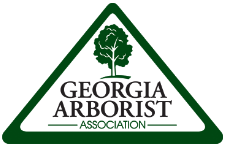What suddenly killed my pine trees?
By David Long, Georgia Forestry Commission, Vice President Georgia Arborist Association
8/25/2025
Did your pine tree just suddenly up and die really quickly? Like really, really quickly? More specifically, did your pine turn from green to brown in the span of about a week? If so, you most likely had an infestation of pine bark beetles. Most pests kill a pine over the course of months or years, but only a few insects cause such a rapid decline in tree health: pine bark beetles. These insects have outbreaks every 10-20 years or so, attack numerous trees throughout the growing season, especially in the Georgia Piedmont, then start to dwindle in numbers after about 3-4 years once their natural predators catch up. The adult insects detect pheromones emitted by stressed, old, or unhealthy pine trees. Georgia has many areas that were planted for timber several decades ago, which have now been developed and contained old, unmanaged and stressed trees; a true buffet for a pine bark beetle. They lay their eggs under the bark which quickly hatch into larvae. The larvae eat the tree’s living tissue under the bark and spread a fungus which eventually and inevitably kills the tree. After about a week or two the larvae develop into adults which fly to the next stressed tree that they detect. While pine bark beetles are native and a part of natural forest processes, removing older trees to make way for new growth, they can cause significant problems for tree owners when they kill trees.
Georgia has 3 types of pine bark beetle that can be identified by the bug’s appearance, the “galleries” they leave under the bark, the “pitch tubes” they leave on the outside of the tree, and the number of trees effected. Let’s meet our culprits shall we:
Black turpentine beetle:
This beetle is the largest and least deadly of the 3 pine bark beetles, usually only killing a few trees at most. It is a black beetle, about ¼ of an inch long with a rounded abdomen. It creates large pitch tubes between the plates of the bark, usually on the first 12 or so feet of the trunk. It makes large, splotchy, D-shaped galleries, sometime almost ½ inch wide, underneath the bark.
Ips Beetles:
Georgia has multiple species of Ips engraver beetles. They come in varying sizes but all have a scooped abdomen with tiny spines on the rear end. They usually kill more trees than black turpentine beetle but rarely wipe out entire stands like the Southern pine beetle. Their pitch tubes typically begin around 30 feet up the tree and come directly out of the bark plates, sometimes having an orange tint to them. Their galleries make a Y or H shape, radiating out from a central chamber.
Southern Pine Beetle:
A non-descript 1/8-inch black beetle, the SPB is most destructive of the bunch. It can wipe out entire timber stands, leaving behind enough dead wood to be a wildfire hazard. Their galleries make winding S shapes. Their pitch tubes also emerge at around 30 feet but usually come from between the bark plates.
How to Manage Pine Bark Beetles:
So, what can you do to prevent or manage pine bark beetles? When it comes to these insects, an ounce of prevention is worth a pound of treatment because, well, there is no treatment once the tree is infected. Once you see the signs of infestation, your goal is to prevent the beetles from infesting other pines. You can achieve this goal by removing the infested tree as soon as possible before the insects can hatch and fly. If you see pines getting infested in your neighborhood, it might be a good idea to go ahead and get a quote from a tree service, just in case you need to get that tree removed in less than a week’s notice. Ideally, you want to chip, burn, or haul off the wood, but even just getting the trunk on the ground can stop the beetles from moving to the next tree.
You can hopefully avoid having to remove trees by taking preventative measures before the next outbreak. Georgia is currently experiencing major outbreak, so now is the time to prepare. Make sure that any stands of pine trees you have are properly thinned out. Remove trees with cankers, fungal growth, or other major health defects. Take steps to keep your trees generally healthy, and talk to your neighbors to develop a plan for pines that could fall across property lines. There are both injectable and sprayable insecticides labeled for prevention of southern pine beetle but they are usually not recommended due to the high cost and limited window of prevention (3 month to 1 year depending on the insecticide). If you are interested in either of these options, contact a tree service that offers plant health care. For more information on how to manage or prevent pine bark beetles, contact your county forester (for rural properties over 10 acres) or urban forester (for urban properties under 10 acres).
Images:
https://en.wikipedia.org/wiki/Dendroctonus_terebrans






